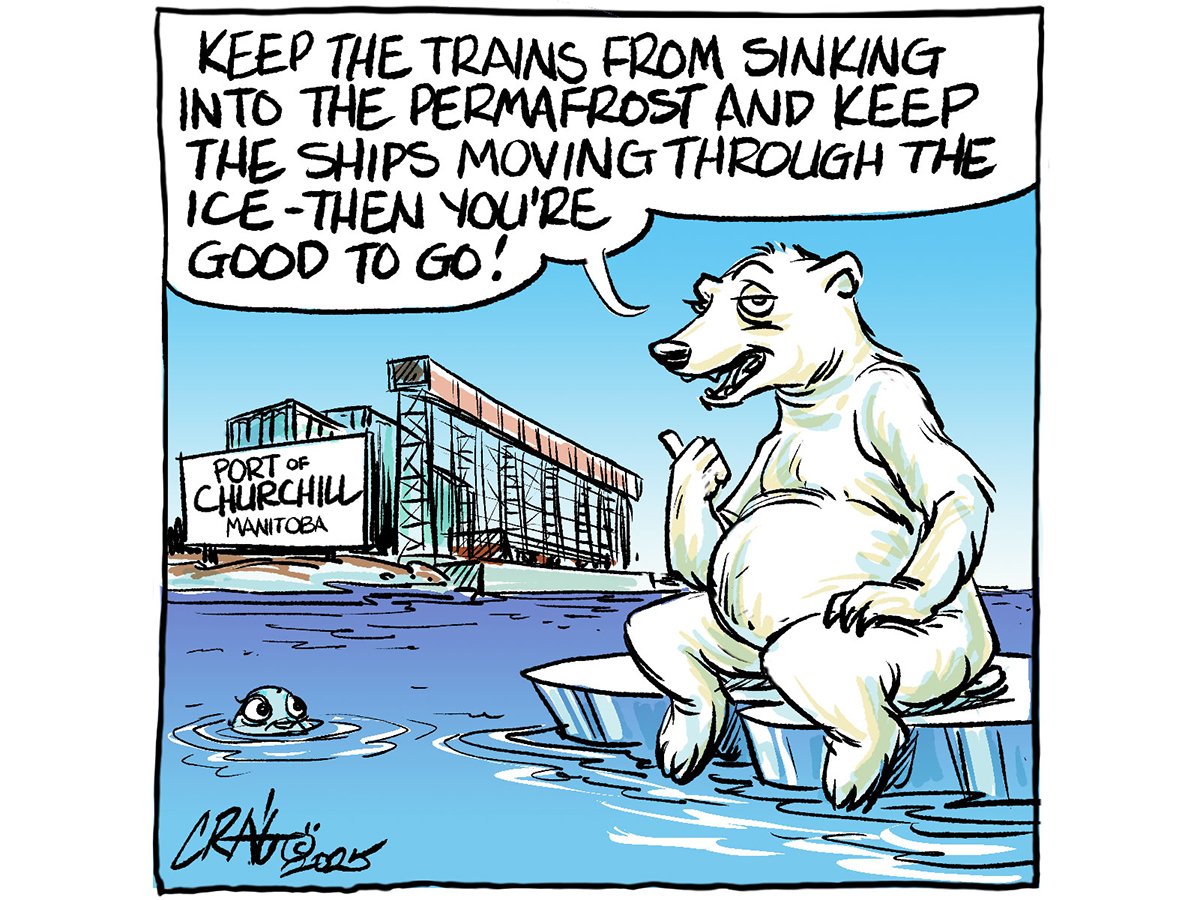Before chatter about improving the Port of Churchill is taken seriously by Prairie exporters, reliable service must be first established.
Talk about improving Canada’s only deep-water Arctic port has been written into Canadian political speeches for many decades.
And even before the port opened in 1931, the draw of an escape hatch from the daunting distance to either the east or west coast was inescapable for Prairie dwellers.
Read Also

U.S. bill could keep out Canadian truckers
The Protecting America’s Roads Act, which was tabled in the U.S. House of Representatives at the beginning of October, would “rid the country of illegal immigrant commercial truck drivers and ineligible foreign nationals.”
From the comfort of our southern homes, far from permafrost or sea ice, enabling northern Manitoba to improve its maritime capabilities seems an obvious move.
But we’ve been down this track before, and now the permafrost holding it up is melting and nobody has wanted to maintain it over the long term.
In March, the federal and Manitoba governments announced nearly $80 million in funding for the port in Churchill and the rail line to it.
Saskatchewan premier Scott Moe and Manitoba premier Wab Kinew also recently signed an agreement with Arctic Gateway Group to upgrade infrastructure and modernize supply chains through the port.
While these announcements are good signs for Prairie exporters, they are unlikely to be enough to drum up significant private investments in the port.
This is largely because it’s unlikely that companies will hinge a significant percentage of their business on the performance of a rail line that’s built on permafrost.
Proponents for the Port of Churchill often say climate change is reducing the amount of sea ice and that the shipping window at the port has, and will, increase significantly.
However, they often fail to mention that increased temperatures in the region also undermine the rail infrastructure to the port.
Barry Prentice, professor of supply chain management at the University of Manitoba, told the Western Producer last year that the problem with running a rail line over muskeg can be solved by moving it off the muskeg.
He said if 250 kilometres of the rail line are moved 50 to 100 km west of where the rail line is now, it could be built on rock instead of muskeg.
The cost of moving this line would be staggering, approximately $1.5 billion, according to Prentice, but once in place, it would be less vulnerable to a warming climate, including large flooding events such as the storms that washed away large sections of it in 2017.
Sections of this rail line built on permafrost will never be reliable, and this remains a significant investment impediment.
Mark Hemmes, president of Quorum Corp., which is Canada’s grain monitor, recently told the Western Producer the rail line is not the only challenge for grain shippers.
For instance, the port only operates for three months of the year, which isn’t a large enough window for the big grain companies that have buyers wanting consistent movement of grain.
It also takes longer for railways to recover cars compared to shipments to Vancouver or Thunder Bay, and grain companies would rather use their own export terminals compared to using a facility owned by the Arctic Gateway Group.
A University of Manitoba study suggests the port could already remain open much longer because of climate change, and Canada has already invested in an ice breaker fleet that could be used to extend the shipping season.
If a longer shipping season was demonstrated, alongside a reliable rail line, private investments would help the Port of Churchill become a critical infrastructure for Prairie shippers.

















